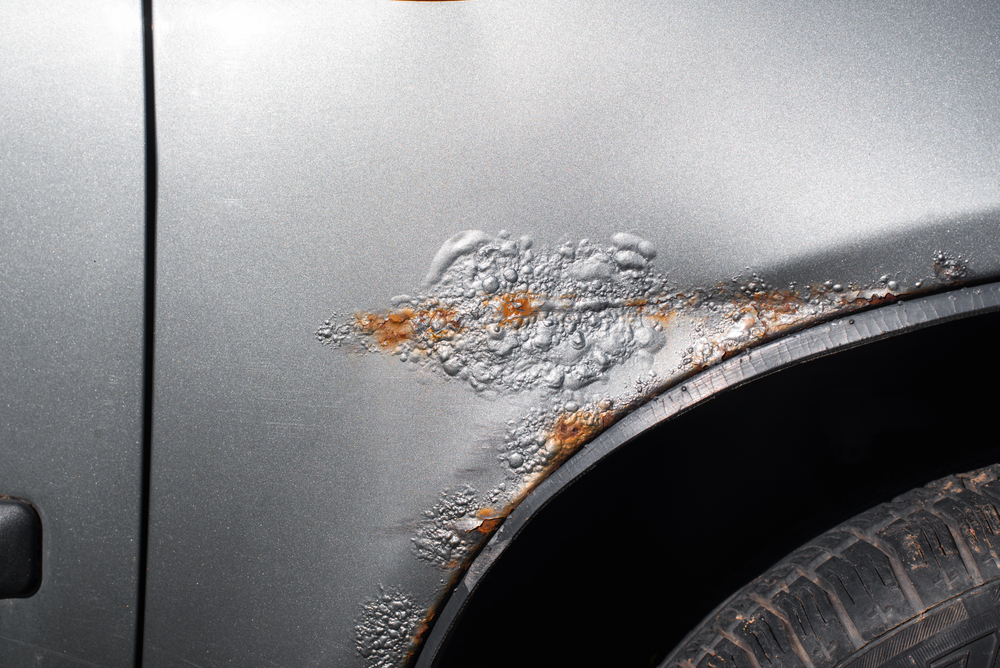
Rust sits where drivers almost never look. It forms quietly, sometimes behind a single plastic panel or along a factory-sealed seam decades old. Dealerships know this, and some use a simple tactic to steer buyers toward add-ons that look protective but often mask the real problem. A routine rust inspection can expose those hidden weak spots, but many owners never ask for one. They rely on surface impressions, quick walk-arounds, and a salesperson’s confidence. That silence costs more than most expect.
The Hidden Cost of a Quick Wash
Before used cars roll onto the lot, many go through a fast clean-up. Not a full detail—just a rinse and a wipe. It sounds harmless. But that wash removes loose dirt and makes panels shine long enough to distract buyers from early rust indicators. A proper rust inspection would catch the soft metal beneath the surface, especially around wheel wells and door bottoms, where road salt settles and hardens. Most shoppers never ask for that check, even though it can prevent a future repair bill that dwarfs the price of a simple diagnostic.
The wash trick works because it creates a false sense of freshness. A car looks well-maintained. It feels ready. And it nudges buyers to skip steps that would reveal corrosion forming beneath the gloss.
The $50 Frame-Check Shortcut
Some dealerships offer a frame evaluation for a small fee. Fifty dollars. Quick, cheap, and framed as peace of mind. But the inspection often covers only the easiest spots to reach, not the structural points where corrosion spreads first. A thorough rust inspection takes time. It requires lifting the vehicle, removing covers, and looking at welds that rarely see daylight.
The shortcut version does none of that. It provides a printed sheet that reassures buyers without actually protecting them. And it opens the door for upsells—undercoating packages, sealants, and “corrosion protection plans” that promise more than they deliver. All built on the authority of that flimsy initial check.
Plastic Panels That Hide the Truth
Modern cars use more plastic shielding than ever. It keeps airflow tidy and reduces road noise. But it also hides corrosion as effectively as paint. Dealerships know buyers do not remove these pieces, and techs performing quick intake inspections rarely do either. A thorough rust inspection would flag moisture trapped behind those panels, especially on vehicles from northern states or coastal regions.
Left alone, that trapped moisture becomes a breeding ground for structural decay. It spreads silently, following seams the way water follows gravity.
Surface Rust as a Distraction
Sales staff often point out “normal surface rust” on brake hardware or exhaust pipes. And they are right—some of it is harmless. But the attention shift works. Buyers focus on the obvious, not the dangerous. Meanwhile, serious corrosion may be eating through suspension mounts or subframe rails. A comprehensive rust inspection would prioritize those areas, not the cosmetic flakes buyers can already see.
The distraction works because it is grounded in truth. A little rust is normal. But the little rust becomes a decoy, drawing eyes away from the metal that matters.
Fresh Undercoating That Masks Damage
Undercoating should protect a vehicle. Applied correctly and at the right time, it does. But when sprayed over existing corrosion, it locks moisture against the metal and accelerates the decay. Some lots apply fresh coating right before listing a vehicle. It looks neat, clean, and new. And it hides problems just long enough to move the car.
This is where a real rust inspection becomes essential. It can spot uneven spray patterns, rubberized coatings applied too recently, and fresh material covering pitted metal.
Rusty Hardware That Reveals More Than Most Think
Bolts, brackets, and clamps often rust first. These small parts look insignificant, but they reveal the environment the vehicle lived in. A proper rust inspection examines these details to judge the likelihood of deeper structural corrosion. Quick dealership reviews ignore them unless they interfere with a sale.
Small hardware corrosion is often the only visible clue that something larger is happening underneath. It can warn buyers to walk away before a costly repair becomes their problem.
Missed Maintenance Records and the Corrosion Trail
Service histories often focus on oil changes, filters, and tire rotations. But they rarely mention rust checks. Drivers assume a general inspection includes that step. Many shops skip it. Without documented evaluations, a dealership can shrug off concerns and keep conversations short. A dedicated rust inspection adds clarity. It identifies patterns of neglect or environmental exposure that would otherwise stay buried in the metal itself.
The Simple Check That Changes Everything
A real rust inspection does not rely on shine, printed checklists, or quick assurances. It looks at the vehicle the way time does: slowly, methodically, without bias. And it gives buyers something the $50 dealership shortcut never provides—a clear picture of what they are actually paying for.
Have you requested a rust-focused inspection before buying a used car?
What to Read Next…
- Dealership Confidential How They Make Thousands Selling Cars With Cleaned Salvage Titles
- How Dealerships Legally Inflate Your Bill By Hundreds Of Dollars
- Why Car Dealerships Don’t Want You To Know These 5 Buying Tricks
- 9 Well Known Tricks Used By Car Dealerships To Get More Money
- 7 Car Dealership Tricks That Seem Legal But Aren’t
The post When Rust Hides in Plain Sight—The $50 Dealership Trick You’ve Never Noticed appeared first on Clever Dude Personal Finance & Money.







